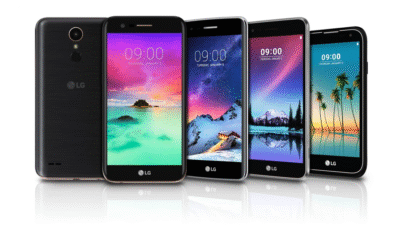
In April 2021, LG Electronics officially announced its decision to close its mobile phone business, marking the end of a 26-year journey in the highly competitive smartphone industry.1 This move, while perhaps surprising to some, was the culmination of years of financial losses and an inability to keep pace with an evolving market dominated by a few key players.2
A Long and Winding Road of Losses
The primary driver behind LG’s exit was a prolonged period of unprofitability.3 The company’s mobile division had been suffering operating losses for 23 consecutive quarters, accumulating billions of dollars in deficits.4 By 2020 alone, LG’s mobile business recorded a loss of approximately $751 million USD.5 This continuous financial bleeding became unsustainable, especially when compared to the highly profitable home appliance and entertainment divisions of LG.6
Stiff Competition and Shifting Market Dynamics
The smartphone market is notoriously fierce, dominated by giants like Samsung and Apple at the premium end, and increasingly aggressive Chinese manufacturers like Xiaomi, Oppo, and Vivo in the mid-range and budget segments. LG, despite its long history in mobile and its occasional innovative designs, struggled to carve out a significant and profitable niche.7
Several factors contributed to this struggle:
- Lagging Software Updates: LG often faced criticism for its slow and inconsistent software updates, leaving many users with outdated Android versions. This was a significant drawback for consumers who prioritized timely security patches and new features.
- Hardware Issues and Quality Control: Earlier issues, such as the “bootloop” problems with some of its flagship models (like the G4, G5, V10, and V20), severely eroded customer confidence and trust in the brand.
- Inconsistent Product Strategy: While LG was known for its willingness to experiment with unique form factors and features (e.g., modular phones, dual-screen accessories, the swiveling Wing), these innovations often failed to translate into widespread commercial success.8 They were sometimes seen as gimmicky or lacked polished implementation, leading to lower adoption rates.9
- Weak Marketing and Brand Awareness: Compared to its larger rivals, LG’s marketing efforts for its smartphones were often considered insufficient. This resulted in their devices flying under the radar, even when they offered compelling hardware features.
- Fragmented Market Offerings: In some instances, LG offered different specs for the same phone model across different markets, which could confuse consumers and dilute the brand’s appeal.
- Supply Chain Challenges: Unlike Samsung, which has its own robust component manufacturing capabilities, LG faced difficulties in securing stable chip supplies and other components, especially during periods of global shortages.10 This added to the hassle and cost of bringing devices to market.
A Strategic Pivot
By exiting the smartphone business, LG stated its intention to focus resources on more profitable and growing areas.11 These include:
- Electric Vehicle Components: LG has a joint venture with Magna International for electric vehicle powertrains, a rapidly expanding market.12
- Connected Devices and Smart Homes: Leveraging its expertise in home appliances and AI to create a more integrated smart home ecosystem.13
- Robotics and Artificial Intelligence: Investing in future technologies.
- Business-to-Business (B2B) Solutions: Expanding its offerings for commercial clients.
- Platforms and Services: Developing new avenues for growth beyond hardware sales.
- 6G Wireless Networking: Continuing research and development in mobile technologies, particularly for future applications in other product categories.
The Aftermath
While LG’s global smartphone market share was relatively small (around 2% at the time of its exit), it held a stronger position in specific regions, particularly North America (where it was the third-largest brand) and Latin America. Its departure created a vacuum that competitors like Samsung, Motorola, HMD Global (Nokia), and Chinese brands like Xiaomi were quick to fill.
For existing LG phone users, the company committed to providing service support and software updates for a period, varying by region.14 The winding down of the mobile business was largely completed by July 31, 2021, with production facilities transitioning to other LG product lines, such as home appliances.15
LG’s decision to leave the smartphone market serves as a stark reminder of the intensely competitive nature of the industry and the challenges even established brands face when profitability remains elusive. It highlights the importance of not just innovation, but also strong execution, consistent software support, and effective marketing to sustain a presence in the cutthroat world of mobile technology.





